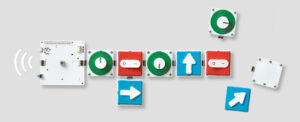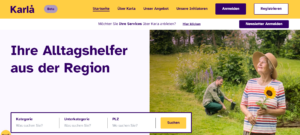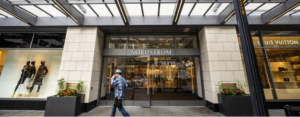Context
DB Operations needed to adjust to keep the pace of fast-moving digitalization. Andreas Bürgler, who served as the head of Operations at the time of the project, emphasized the urgent need for change by mentioning “We have to digitalize, like everyone else. We don’t work user-centered enough”.
One important aspect of user-experience are the Infopoints at train stations because it’s often the first service contact for customers as 70% of tickets are purchased online. Therefore, they planned to redesign the Infopoint within the digitalization mission “DB 4.0”. This time in a different way as Bürgler explains: “We decided not to do it in the old way: we lock our architects in, they design something pretty that we like, and then customers and employers say, ‘I can’t use this’”.

Phases
Bürgler used the yearly general meeting as a design thinking event consisting of six different challenges with 33 teams and 30 coaches.
1) Empathize: The team observed the users and their behavior by doing a field study and engaged with them by gathering feedback from colleagues and external entrepreneurs. During the process the team realized that many processes were analogue, forcing customers to fill in paperwork and that queues built up due to customers asking the same simple questions. Empathizing with the users will become even more important in the prototyping and testing phase to uncover needs that people have which they may or may not be aware of.

2) Define: To phrase the actionable problem statement (the point of view), the team recalled the results of the empathize phase à The Infopoint 4.0 must be recognizable and easy to find in a train station while strengthening the brand image with a consistent visual identity.
3) Ideate: To explore a wide solution space, the project team pitched ideas about the Infopoint’s design and UX to generate even more ideas together with the audience.
4) Prototype: After evaluating the resulting ideas, it was time to start prototyping. To keep the rapid prototyping simple, they created Mockups with cardboard. After various paper prototypes, the time had come to create the first real prototype. An empty train station in Wannsee seemed to be the right spot to start. To build high quality prototypes very fast, Bürgler hired a stage designer of the “Deutsche Oper”. This phase finished with eight prototype generations.
5) Test: In each prototype iteration the project team tested the product with different user groups to identify their specific needs and continuously improve the prototypes. Among the testing users were train travelers, co-workers, different associates, and wheelchair users.
Results
Currently, eight new Infopoints have been implemented, and DB intends to exchange all 82 service points in Germany with the new design. Bürgler highlights, “We didn’t just want to put a piece of furniture there and leave it like that. We wanted to put life into the piece of furniture.”
“Two aspects of the final prototype are especially important” in Bürgler’s opinion:
- Firstly: A subsidence that allows employees to engage with wheelchair users at eye level, emphasizing the value of facilitating communication in a standard table setting with equal height.
- Secondly: The option for customers to either seek information independently or line up for staff assistance, made possible by incorporating a self-service zone and large information displays in the new service point.

Challenges and solutions
Phrasing the problem at the beginning of the design thinking sprint. Since the phrase must be user-focused and should not limit the solution space it can be difficult to find a proper phrase that specifies the problem. The HPI Academy Program Manager Flavia Bleuel explains: “For example: The question ‘How can we create new KPIs for the area XYZ?’ is not appropriate for a DT sprint. It limits the solution space, is not user-focused, and leaves no space for questioning whether the resulting KPI is the right solution. There is no problem in there”
The boards trust and support is inevitable for a successful project. “We included the board members – they saw the pitches, visited some of the workshops”, Bürgler explains, “We gave regular updates and informed the board about our progress, sometimes ‘live’. I knew there would be some curiosity – ‘what are they doing in this workshop?’ – and I conveyed the impression that I myself have trust in the design team.”
Responsibility for risks has to be taken: “At one point, we stood in front of a cardboard prototype and had to decide: do we really want to present this at a public event in autumn? To make this decision – okay, we’ll do this – has a lot to do with leadership, with taking responsibility for the possible risks of failing”, Bürgler points out.
Lessons learned
-> clearly communicate the current state of a prototype when testing or especially when presenting it
-> the customer’s opinion is crucial to convince board members
-> start implementing innovative processes by starting with a small topic
[Youtube-Video in German: DB Information 4.0: Bessere Information für Reisende – YouTube]



